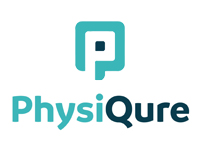Physiotherapy for kids with disabilities is very much an individualized type of treatment. The term “therapeutic & preventive” pretty much sums up the whole concept of physiotherapy. Physiotherapy is used as a mode of intervention to help improve conditions of a patient that are the result of causes beyond the control of the patient or his caregivers. A physical therapy program, being supervised by a physiotherapist, is usually one of the first steps in the management of physiological conditions and disability.
Physiotherapy for kids with disability
Physiotherapy for kids with disability may seem very dissimilar for every child. After all, physiotherapy for children with any condition is different than physiotherapy for older kids. However, in reality the role of physiotherapists is no less significant. In fact, physiotherapy for kids with any condition is even more important than in adults.
After all, kids are still growing, they still need all the same components of the body that an adult does muscles, bones, etc. So it is imperative that the physiotherapist monitors the progress of growth, checks on the range of movements of joints, the strength and flexibility of muscles, the range of functional abilities such as coordination, and the development of physical skills and motor abilities.
The physiotherapy program designed for a child will be customized to meet the specific needs of the child, to alleviate his or her physiological complaints. This is why parents must be involved in the process from the outset so that they can provide the necessary feedback on the overall progress of their child.
But what is important is for the parents to understand that the physiotherapist’s main concern is improving the overall condition of the child. The goal of physiotherapy for children is usually to improve the quality of life of the child suffering from such ailments.
The most common complaints associated with children and physiotherapy treatments are muscle pain and stiffness, joint pain, swelling, growth deformity, lethargy, decreased movement, irritability, emotional problems, and fractures. When a child experiences pain or stiffness, it is essential to determine the cause first.
Children might be required to undergo some physical therapy so that they are taught how to overcome the problem. Physiotherapy usually involves massage, manual therapy, stretching exercises, heat pack/cold compresses, electrotherapy (cycling or electronic stimulation), electrical stimulation, etc.
Some of these techniques might be painful for the child and hence must be monitored closely by the parents during the physiotherapy. It is the responsibility of the parents to monitor the progress of the child throughout physiotherapy and to obtain proper medical advice if required.
The role of physiotherapists for children with ADHD is to help the parents by educating them about the disease and its symptoms, providing information on medication, and monitoring the progress of the child. Usually the physiotherapy starts with mild exercise or stretching which can then be followed by a therapeutic massage or manual stimulation.
The child can then be started on physiotherapy classes which might include special exercises for reducing pain or enhancing flexibility and strength. The duration of physiotherapy can vary depending on the age and the development of the child.
There are also cases where the physiotherapy is given after a surgical procedure to remove any restrictions imposed by the surgery. This might involve reduction of bones, weight loss or restriction of movement.
A physiotherapist can provide the appropriate instructions for the post-operative activities depending on the age and the physical structure of the child. Sometimes physiotherapy for children with ADHD is done separately by the parents and the physiotherapists.
